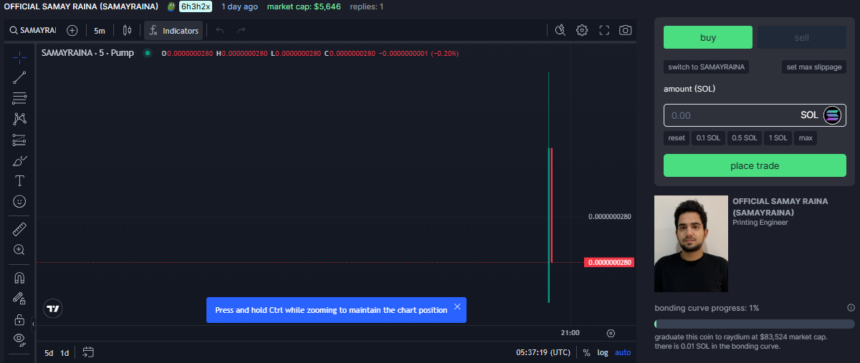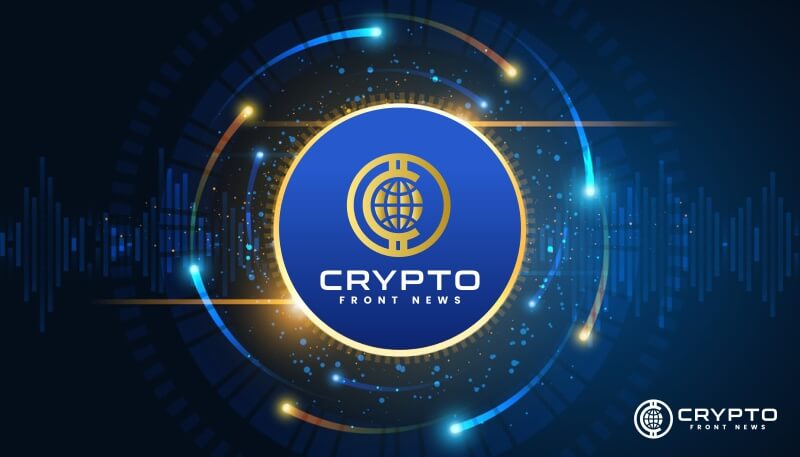Bananas31: Trade or Hold?*
$BANANAS31
Introduction
Bananas31 is a cryptocurrency project that has been gaining attention in the market. As with any investment, it's essential to evaluate whether to trade or hold Bananas31. In this article, we'll delve into the project's fundamentals, market trends, and technical analysis to help you make an informed decision.
Project Fundamentals
Bananas31 is a decentralized finance (DeFi) project that aims to provide a unique solution for yield farming and liquidity provision. The project's native token, BAN31, is used for governance, staking, and rewards.
Market Trends
The cryptocurrency market is known for its volatility, and Bananas31 is no exception. The project's market capitalization and trading volume have been fluctuating, making it essential to monitor market trends closely.
Technical Analysis
To evaluate whether to trade or hold Bananas31, let's examine the project's technical indicators:
- *Relative Strength Index (RSI)*: The RSI indicates whether a cryptocurrency is overbought or oversold. A high RSI suggests that Bananas31 may be overbought, while a low RSI indicates that it may be oversold.
- *Moving Average Convergence Divergence (MACD)*: The MACD helps identify trends and potential buy or sell signals. A bullish MACD crossover indicates a potential buy signal, while a bearish crossover suggests a potential sell signal.
- *Support and Resistance*: Identify key support and resistance levels to inform your trading decisions.
Trade or Hold?
Based on the project's fundamentals, market trends, and technical analysis, here are some possible scenarios:
- *Trade*: If you're looking to capitalize on short-term price movements, trading Bananas31 might be a viable option. Monitor market trends and technical indicators closely to make informed trading decisions.
- *Hold*: If you believe in the long-term potential of Bananas31 and its unique solution for yield farming and liquidity provision, holding the token might be a better option. Keep an eye on the project's development and market trends to adjust your strategy accordingly.
Conclusion
Whether to trade or hold Bananas31 depends on your investment goals, risk tolerance, and market analysis. By evaluating the project's fundamentals, market trends, and technical analysis, you can make an informed decision that aligns with your investment strategy. Always remember to conduct thorough research and consider multiple factors before making any investment decisions.

Exploring $PUMP Coin: A Rising Star in the Crypto Universe
The cryptocurrency market is no stranger to innovation, volatility, and the occasional meme-driven frenzy. Among the latest tokens capturing attention is $PUMP coin, a digital asset that has sparked curiosity and excitement across trading platforms and social media alike. As of April 2, 2025, $PUMP is making waves with its unique positioning and growing community interest. In this article, we’ll dive into what $PUMP coin is, its origins, mechanics, and what might lie ahead for this intriguing cryptocurrency.
What is $PUMP Coin?
$PUMP coin is a cryptocurrency that has emerged as a notable player in the meme coin ecosystem, though its exact identity can vary depending on the blockchain it operates on. There are multiple tokens bearing the $PUMP ticker across different networks, such as Solana, BNB Chain, and others, each with distinct characteristics. However, the most prominent iterations appear to be tied to platforms like Pump.fun (on Solana) and other decentralized ecosystems aiming to capitalize on market hype and community engagement.
At its core, $PUMP is often marketed as a token designed to embody the spirit of a "pump"—a rapid price increase driven by speculation, community momentum, or strategic mechanics. While some versions of $PUMP lack clear utility beyond trading and hype, others integrate features like staking rewards, governance rights, or airdrop incentives to encourage participation.
Origins and Launch
The $PUMP phenomenon is closely associated with platforms like Pump.fun, a Solana-based launchpad launched in January 2024 that allows users to create and trade meme coins instantly for minimal fees (less than $2). Pump.fun has become a breeding ground for tokens like $PUMP, enabling creators to deploy coins with a fair launch model—meaning no presales or pre-allocations—and a bonding curve that increases the price as more tokens are bought. Once a token hits a market cap of $69,000 on Pump.fun, it "graduates" to decentralized exchanges like Raydium, often with a portion of liquidity burned to potentially boost value.
Other iterations of $PUMP, such as those on BNB Chain (e.g., Big Pump), take a simpler approach, branding themselves as pure meme coins with no utility, banking entirely on the dream of a "big pump" to attract speculators. Social media posts on X suggest additional versions tied to events like token generation events (TGEs) on Binance Wallet or listings on exchanges like MEXC and Gate.io, complete with airdrop campaigns offering significant USDT rewards.
How Does $PUMP Work?
The mechanics of $PUMP vary by implementation, but a few common threads emerge:
Bonding Curve Model: On platforms like Pump.fun, $PUMP tokens follow a bonding curve where the price rises with each purchase and falls with each sale. This creates a speculative environment where early buyers aim to profit from later adopters.
Community-Driven Hype: Like many meme coins, $PUMP thrives on social sentiment. Posts on X highlight its trading volume (e.g., $1.8 billion on Solana) and market share, drawing parallels to successful predecessors like Dogecoin or Shiba Inu.
Incentives: Some $PUMP variants offer perks like staking rewards, fee discounts, or governance rights, as noted in X posts. These features aim to retain holders and build a loyal ecosystem.
Exchange Listings: Recent listings on centralized exchanges like MEXC (with 50x leverage futures) and Gate.io, alongside airdrop events (e.g., 150,000 USDT), signal efforts to boost liquidity and visibility.
Market Performance and Sentiment
As of today, $PUMP’s performance is a mixed bag, reflecting the diversity of its iterations. For instance, one X post cites a $PUMP token with a $43.96 million market cap, showing active buying activity, while another suggests a technical analysis with a potential accumulation phase at $0.0025. On CoinMarketCap and CoinGecko, various $PUMP tokens show prices ranging from fractions of a cent to higher values, with trading volumes fluctuating wildly based on hype cycles.
Social sentiment is equally varied. Optimism surrounds exchange listings and airdrops, with some users predicting market cap targets of $4-6 million for certain versions. However, concerns linger about transparency, rug pull risks (common in Pump.fun tokens), and the sustainability of its pump-driven model. The crypto community’s love-hate relationship with meme coins—celebrating their entertainment value while wary of their volatility—is on full display with $PUMP.
The Risks and Rewards
Investing in $PUMP, like any meme coin, is a high-stakes gamble. The rewards can be substantial—early adopters on Pump.fun have seen tokens soar from a $4,500 starting market cap to millions in some cases. Yet, the risks are equally pronounced. The majority of Pump.fun tokens fail to graduate, and even successful ones are prone to "soft rug pulls," where creators or large holders dump their bags, crashing the price. Regulatory scrutiny, such as the UK ban on Pump.fun in December 2024, adds another layer of uncertainty.
To navigate $PUMP, investors should:
Research the specific $PUMP variant (Solana, BNB Chain, etc.) and its contract details.
Watch for red flags like unexplained price surges or concentrated ownership.
Approach with caution, treating it as a speculative play rather than a long-term investment.
The Future of $PUMP
What lies ahead for $PUMP coin? If history is any guide, its fate hinges on community momentum and market trends. Successful meme coins like Dogecoin leveraged cultural relevance and timing—$PUMP’s tie to platforms like Pump.fun and events like the 2024 Bitcoin halving (for some variants) could give it a similar edge. Exchange listings and airdrops may fuel short-term pumps, but long-term viability requires more than hype—perhaps a shift toward utility or stronger ecosystem development.
For now, $PUMP remains a symbol of crypto’s wild frontier: a token born from speculation, powered by community zeal, and teetering between moonshot potential and oblivion. Whether it’s the "trainer of the market" (as one X post claims) or just another fleeting pump, only time will tell.
Disclaimer: Cryptocurrency investments carry high risks. This article is for informational purposes only and not financial advice. Always conduct thorough research before investing.
Brazil Uses NFTs to Serve Subpoenas in Major Crypto Fraud
An unusual but interesting move has come out of a Brazilian court. Amid legal proceedings involving crypto company BWA Brazil, the court has approved the use of non-fungible tokens (NFTs) as a means to serve a subpoena on an unidentified defendant. The company is accused of committing a massive fraud worth around $900 million, equivalent to 11,200 BTC.
This case has thousands of investors biting their fingers. Around 7,000 people are said to have fallen victim to the scheme run by BWA Brazil. However, since most of the parties involved can only be traced through their Bitcoin wallets, not their names or faces, the judge has finally approved a novel idea: to serve legal documents via NFTs sent directly to digital wallet addresses.
The ruling comes from Judge Rafael Monteiro de Almeida in São Paulo. He allows victims’ lawyers to create custom NFTs containing legal information and send them to Bitcoin wallets associated with suspicious transactions.
This approach may sound strange, but imagine: if the person is unknown, has no home address, and is not active on social media—how can the law reach them? A crypto wallet is the only trace that can be used. And as the judge said, it’s better to send a letter to an address that exists than to wait for a door that will never open.
On the other hand, this news comes amid the various crypto dynamics that are developing in Brazil. On March 26, 2025, Brazil’s National Data Protection Authority (ANPD) affirmed the ban on the World ID project.
The project gained attention due to its promise of cryptocurrency incentives in return for biometric identification. The ANPD considered the practice risky and issued an ultimatum of a daily fine of BRL50,000, approximately $8,771.78, if the ban was violated.
On the other hand, the CNF reports that an advisor to Brazil’s Vice President sees Bitcoin as essential for long-term economic resilience. In fact, some legislators are pushing for 5% of Brazil’s foreign exchange reserves to be allocated to Bitcoin. Diversifying the nation’s financial strategy and keeping up with the times are the objectives.
This move reflects how digital currencies are no longer considered just “speculators’ toys.” In the eyes of top state officials, Bitcoin can now become a kind of digital gold, a hedge, and a long-term investment vehicle. If Brazil really takes this step, it could drastically change the direction of their fiscal policy.
Still not enough? On February 20, 2025, asset manager Hashdex received the green light from the Brazilian Securities and Exchange Commission or Comissão de Valores Mobiliários (CVM) to launch the world’s first spot XRP ETF . The product is traded on the national stock exchange B3 and has immediately attracted global market attention.
BananaCoin (BCO) Overview
BananaCoin (BCO) was an Ethereum-based token launched in 2017 to fund the expansion of a banana plantation in Laos. The project aimed to grow and export "Lady Finger" bananas to China, where demand was high. Each BCO token was pegged to the export price of one kilogram of bananas, making it a commodity-backed cryptocurrency.
Project Outcome
The BananaCoin project raised approximately $4.7 million, but there was little transparency about whether the plantation expansion succeeded as promised. Over time, the token's market activity declined, and as of April 2025, BCO is no longer actively traded.
Current Status
Total Supply: 5,850,914.88 BCO
Number of Holders: 2,634
Trading Activity: Minimal or nonexistent
BananaCoin vs. Other Similar Tokens
Several other tokens have similar names but are unrelated to BananaCoin (BCO):
1. BananaCoin (BANANA) – A charity-focused cryptocurrency funding global education.
2. Banana (BANANA) – A token used in the CyberKongz NFT ecosystem.
3. Banano (BAN) – A meme cryptocurrency known for fast, feeless transactions.
These projects are separate and should not be confused with the original BananaCoin (BCO).$BANANAS31
Knowing the Macro Situation is Essential for Understanding the Crypto Industry
Introduction
The cryptocurrency industry is often perceived as an independent financial ecosystem, but it is deeply influenced by macroeconomic factors. From inflation rates to geopolitical events, these external elements significantly impact the price, adoption, and regulatory environment of digital assets. Understanding macroeconomic conditions is essential for investors, traders, and policymakers who seek to navigate the volatile world of crypto effectively. This article explores the key macroeconomic indicators that shape the crypto market and explains why keeping an eye on the macro situation is crucial.
1. Interest Rates and Monetary Policy
One of the most significant macroeconomic factors affecting cryptocurrencies is central bank monetary policy, particularly interest rates. When interest rates are low, borrowing is cheap, leading to increased liquidity in financial markets, including crypto. Investors tend to move towards riskier assets like Bitcoin and altcoins in search of higher returns. However, when interest rates rise, traditional assets like bonds and savings accounts become more attractive, causing capital to flow out of crypto.
Key Takeaways:
Lower interest rates generally lead to higher investments in crypto.
Higher interest rates reduce liquidity, leading to potential sell-offs in the crypto market.
Federal Reserve policies and statements can influence Bitcoin's price trends.
2. Inflation and Store of Value Narrative
Inflation erodes the purchasing power of fiat currencies, making alternative assets like gold and Bitcoin attractive as stores of value. Bitcoin, often referred to as "digital gold," has gained popularity during times of high inflation. The limited supply of 21 million BTC makes it a hedge against inflationary pressures caused by excessive money printing by central banks.
Key Takeaways:
Rising inflation increases demand for Bitcoin and other scarce digital assets.
Stablecoins pegged to fiat currencies provide a hedge against local currency devaluation in emerging markets.
3. Geopolitical Events and Regulatory Developments
Global political developments, including trade wars, sanctions, and conflicts, have a profound impact on financial markets, including crypto. For instance, economic instability in countries with weak banking systems often drives citizens to adopt cryptocurrencies as an alternative financial system. Additionally, regulatory decisions—such as China's ban on crypto mining or the U.S. Securities and Exchange Commission’s (SEC) rulings—can significantly influence market trends.
Key Takeaways:
Political instability often drives people towards decentralized assets.
Government regulations can either boost or hinder crypto adoption.
Global economic sanctions can increase the use of cryptocurrencies for cross-border transactions.
4. Stock Market Correlations and Risk Appetite
Although initially seen as a separate asset class, cryptocurrencies have shown increasing correlations with stock markets, especially during periods of economic uncertainty. During bullish stock market conditions, investors are more likely to allocate funds to speculative assets like crypto. However, during market downturns, investors tend to move away from volatile assets, leading to crypto price declines.
Key Takeaways:
Crypto markets often mirror stock market trends, especially in risk-on environments.
Economic downturns can lead to crypto sell-offs as investors seek safer assets.
5. Liquidity and Global Market Conditions
Liquidity in the financial system plays a crucial role in the crypto market. When central banks inject liquidity through quantitative easing (QE), asset prices—including cryptocurrencies—tend to rise. On the other hand, during periods of quantitative tightening (QT), markets experience reduced liquidity, which can lead to declining crypto valuations.
Key Takeaways:
Increased liquidity leads to higher crypto market participation.
Reduced liquidity causes market corrections and price volatility.
Conclusion
Understanding macroeconomic conditions is essential for navigating the cryptocurrency market. Interest rates, inflation, geopolitical risks, stock market trends, and liquidity conditions all play a role in shaping the industry’s future. By staying informed about macroeconomic developments, investors and traders can make better decisions, manage risks effectively, and capitalize on emerging opportunities in the ever-evolving world of digital assets.


 Lowest price
Lowest price Highest price
Highest price 












































